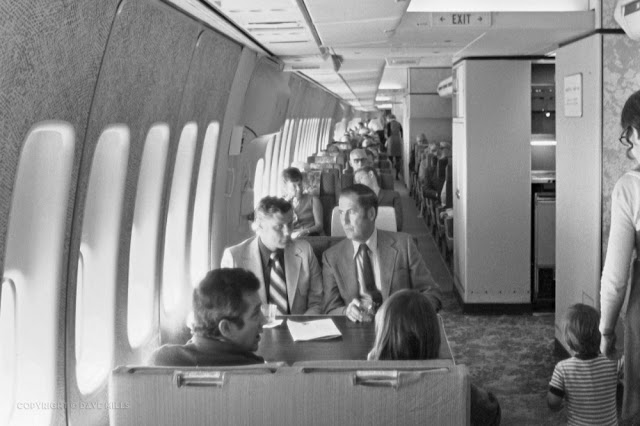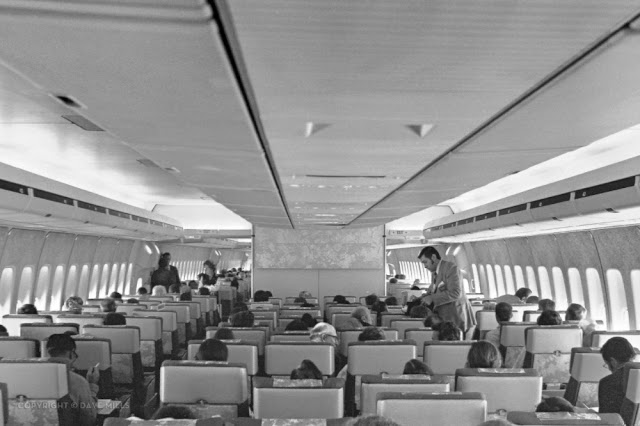Boeing 747, also known as the jumbo jet was first introduced in 1970. With Pan American airlines as one of its major investors they had the possibility to influence the design and development of the aircraft. It was deemed that the world needed a jet plane of massive size that could transport hundreds of passengers fast, efficient and with style.
On January 15, 1970, First Lady of the United States Pat Nixon christened Pan Am’s first 747 at Dulles International Airport (later Washington Dulles International Airport) in the presence of Pan Am chairman Najeeb Halaby. Instead of champagne, red, white, and blue water was sprayed on the aircraft. The 747 entered service on January 22, 1970, on Pan Am’s New York–London route.
The 747 enjoyed a fairly smooth introduction into service, overcoming concerns that some airports would not be able to accommodate an aircraft that large. Although technical problems occurred, they were relatively minor and quickly solved. After the aircraft’s introduction with Pan Am, other airlines that had bought the 747 to stay competitive began to put their own 747s into service. Boeing estimated that half of the early 747 sales were to airlines desiring the aircraft’s long range rather than its payload capacity. While the 747 had the lowest potential operating cost per seat, this could only be achieved when the aircraft was fully loaded; costs per seat increased rapidly as occupancy declined.
International flights bypassing traditional hub airports and landing at smaller cities became more common throughout the 1980s, thus eroding the 747’s original market.Many international carriers continued to use the 747 on Pacific routes. In Japan, 747s on domestic routes were configured to carry nearly the maximum passenger capacity. Below is a collection of various photos depicting how it was like to travel with a jumbo jet in the 1970s:











